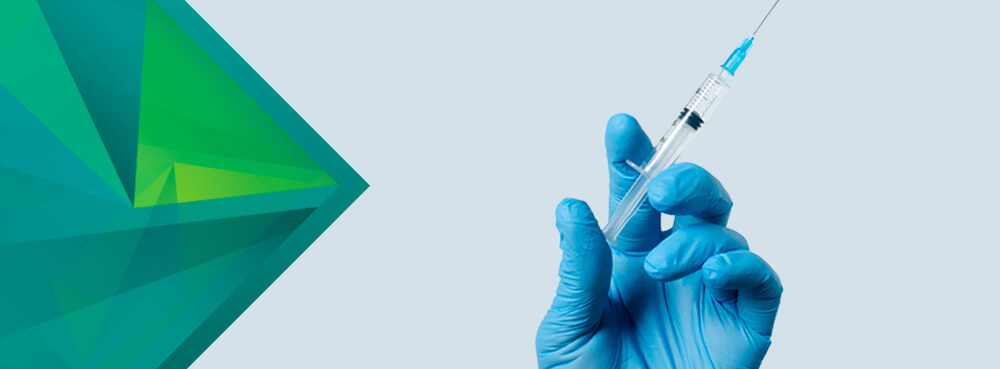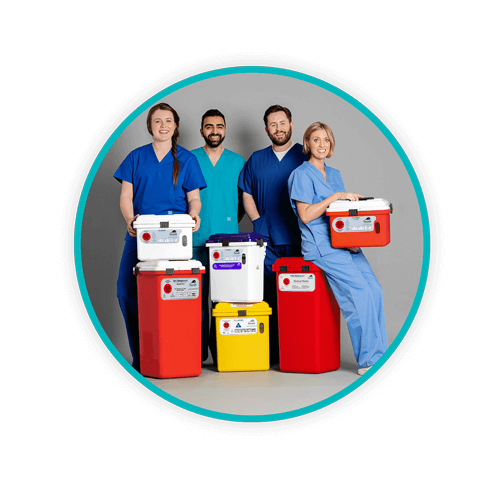Strategies to Reverse a Worrying Rise in Needlestick Injuries

A recent study published by the Royal College of Nursing (RCN) reported a disturbing rise in the number of blood and bodily fluid exposure (BBFE) incidences, including sharps injuries, among RCN Members in the UK in 2020, highlighting another way that the pandemic has put increased strain on healthcare workers. While the report focused on members of the Royal College of Nursing and their specific practices, the findings are a reminder to healthcare workers everywhere, demonstrating the need for improved safety standards and increased awareness of the risks associated with BBFE incidences.
TOPICS WE WILL COVER:
1 / What is Driving the Rise in Exposure?
2 / Accurate Reporting is Still a Challenge
3 / Understanding the Causes of Sharps Injuries Can Help with Prevention
4 / Measures to Minimize Sharps Injuries
5 / Sharpsmart Supports Making Healthcare Safer
What Is Driving the Rise in Exposure?
In order to study rates of BBFE researchers surveyed 7,571 members of the RCN to better understand their experience with sharps in the 2020 calendar year as well as throughout their career.
career.
Among the most surprising findings from the study was that 15% of respondents had suffered a sharps injury in 2020, which is a significant increase from 2008, the last year this survey was conducted. Additionally, 3% of those surveyed received multiple sharps injury in the last year.
This unexpected rise in sharps injuries is likely related in part to the added strain and stress of the pandemic – 27% of respondents cited fatigue as a contributing factor to injuries.
However, there’s more to the story than that.
A quarter of respondents also pointed to lack of safety equipment, and, more alarmingly, 38% of respondents had not received training on all the safety engineered devices (SEDs) they use. Lack of access to safety engineered devices and lack of training when access is available were certainly major contributing factors.
It is also important to acknowledge that 63% of respondents reported receiving at least one sharps injuries during their career. When surveyed in 2008, only 48% of respondents had sustained a sharps injury, further underscoring that the issue is driven by more than just pandemic-related fatigue.
Accurate Reporting Is Still a Challenge
One challenge in analyzing rates of BBFE over time is that, according to the survey, 29% of incidences were not reported despite a mandatory requirement for reporting exposures. Of those that chose not to report an injury, almost 40% thought the injury risk was too low, with another 15% finding no benefit in reporting, suggesting a need to provide additional education around the potential dangers of blood and bodily fluid exposure and why it is important to track incidences.
Additionally, without collated incidence data on a national level, it is difficult to track trends across the country over time.
Understanding the Causes of Sharps Injuries Can Help with Prevention
While some sharps injuries occurred before or during a procedure, perhaps unsurprisingly, the plurality of injuries were associated with sharps disposal, accounting for almost a third of all cases. Researchers found these instances to be particularly alarming as they are considered “preventable adverse events” based on current regulations and compliance standards in the UK; however, they identified three potential causes for these cases:
- Sharps containers may not be located as close to the point of care as they should be
- Sharps containers may not feature all the appropriate safety features
- Use of non-SEDs on non-activated safety sharps
As previously mentioned, many respondents did not have access to safety engineered devices, with 15% reporting “nil to poor” availability. Additionally, 23% reported that sharps disposal containers were not always close to the point of care. Taken together, that is a recipe for disposal-related accidents, yet it also points to a solution.
Measures to Minimize Sharps Injuries
The authors of the survey conclude that current preventative measures have not reduced the number of sharps injuries among nurses in the UK. One reason for this may be the cost associated with supplying the safest SEDs. Additionally, researchers suggest that current levels of blood exposure and training are sub-optimal, as highlighted by the lack of reporting in certain instances.
In order to minimize the number of sharps injuries, the authors of the study provide several actionable recommendations:
- Employers and staff should annually review their BBFE policies and evaluate whether they are using the safest SED available for all procedures
- All staff, not just clinicians, should be educated on BBFE risks, prevention, and reporting.
- All staff should be properly trained on the SEDs they use at regular intervals and when an SED-related injury occurs
- All standard devices should be removed once replaced by an SED
- Sharps disposal bins should be positioned at the point of procedure
- Sharps disposals bins should be audited to ascertain the percentage of SEDs used and percentage activated correctly
Daniels Health Supports Making Healthcare Safer
While the result of this survey suggests there is still plenty of work to be done to avoid preventable incidences of BBFEs, including sharps injuries, the path forward is clear. With greater adoption of SEDs and a renewed focus on training and education, caregivers should see a reduction in incidences despite the ongoing challenges associated with the pandemic.
Additionally, compliant sharps disposal containers are a key component of any reduction strategies. The Daniels Health sharps container is the first sharps waste containment system to actively protect against needlestick injuries and infection risk. With the safety features needed to reduce sharps injuries at the point of disposal and a wide range of accessories and mounting options to ensure a container is located where you need it, when you need it, there is no better option for making healthcare safer.
For more information about Daniels Health and our products, services, and waste management solutions, call us today.
Let's Talk!
Your time is valuable, and we don’t want to play hard to get. You can either phone us directly on the details listed on our contact page, or feel free to fill out this short form and one of our team members will get back to you as quickly as possible.
